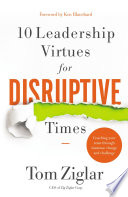

Visionary thinking is crucial in disruptive times as it allows leaders to foresee potential challenges and opportunities. This virtue emphasizes the importance of having a clear and compelling vision that can inspire and guide teams through uncertainty. Leaders who cultivate this skill can better navigate the complexities of change, fostering innovation and adaptability within their organizations. By effectively communicating this vision, leaders can align their teams towards common goals, ensuring that everyone is on the same page during turbulent periods.
Continue readingEmpathy and emotional intelligence are vital in maintaining team morale and cohesion during disruptive times. Leaders who practice empathy can better understand the feelings and perspectives of their team members, creating a supportive work environment. This virtue helps leaders to connect with their teams on a deeper level, fostering trust and collaboration. By recognizing and addressing the emotional needs of their employees, leaders can enhance engagement and productivity, ultimately driving better outcomes for the organization.
Continue readingIn a rapidly changing world, adaptability and agility are essential virtues for leaders. These qualities enable leaders to respond swiftly to new information, market shifts, and unexpected challenges. By embracing change and encouraging their teams to do the same, leaders can create a culture of resilience and innovation. This flexibility allows organizations to pivot when necessary, ensuring that they remain competitive and relevant in their industries. Leaders who embody adaptability can inspire their teams to embrace change rather than resist it.
Continue readingDecisiveness is a critical virtue for leaders, especially in times of disruption when swift action is often required. Leaders must be able to assess situations quickly, weigh options, and make informed decisions. This ability instills confidence in teams, as they look to their leaders for direction during uncertain times. By fostering a culture of decisiveness, leaders can empower their teams to take ownership of their roles and contribute to problem-solving efforts. This virtue also involves being willing to take calculated risks, which can lead to innovative solutions.
Continue readingIntegrity is fundamental in establishing trust and credibility with teams and stakeholders. Ethical leadership involves making decisions that align with moral principles and values, even when faced with difficult choices. During disruptive times, leaders must prioritize transparency and accountability, ensuring that their actions reflect their words. This virtue fosters a strong organizational culture, where employees feel valued and respected. Leaders who demonstrate integrity can inspire loyalty and commitment from their teams, ultimately driving long-term success.
Continue readingCollaboration is essential in navigating disruptive times, as it encourages diverse perspectives and collective problem-solving. Leaders who prioritize collaboration can build strong, cohesive teams that work together effectively to overcome challenges. This virtue involves creating an inclusive environment where all voices are heard and valued. By fostering collaboration, leaders can harness the strengths of their team members, leading to innovative solutions and improved performance. A collaborative culture also enhances employee engagement, as individuals feel more connected to their work and each other.
Continue readingIn an era of constant change, a continuous learning mindset is vital for leaders and their teams. This virtue encourages individuals to seek knowledge, embrace feedback, and view challenges as opportunities for growth. Leaders who model this behavior can create a culture of learning where experimentation and innovation are encouraged. By investing in professional development and fostering curiosity, leaders can ensure that their organizations remain agile and capable of adapting to new circumstances. This commitment to growth not only enhances individual performance but also drives organizational success.
Continue reading